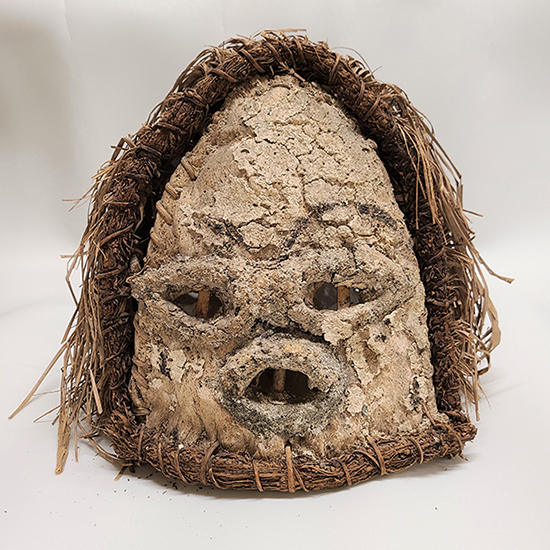Asaro Mud Mask

This mud mask was made by Asaro villagers in the Eastern Highlands Province of Papua New Guinea. Known today as holosa, which literally translates to ghosts, this type of mask is an early example of the costume of the Asaro mudmen, a prominent cultural symbol of Papua New Guinea. The mudmen have their origins in the late nineteenth century, when the Asaro adopted a neighboring village’s ritual of disguising themselves before attacking an enemy. The Asaro developed a practice called girituwai during which men wore a close-fitting mask like this one constructed of bamboo and plant fibers with a light covering of mud. Individual attacks like assassinations were carried out while in this type of disguise, but it was not worn for full warfare, which required men to be dressed in their finest regalia.
The practice of girituwai was revived in the late 1950s, when the frightening Asaro mudmen won a tribal regalia contest. A new version of the costume debuted during the contest with dancers completely covering their bodies in white clay and wearing much more elaborate sculptural masks of solid clay. They also developed a new origin story for the masks, telling a legend of villagers who escaped an attack by hiding in a nearby river. When they emerged covered in white mud, their enemies mistook them for the avenging ghosts of the dead and fled in fear. Since those initial performances, the Asaro mudmen have become a star tourist attraction and pop culture phenomenon, appearing in everything from an Australian soda commercial to the album art for Pink Floyd.

